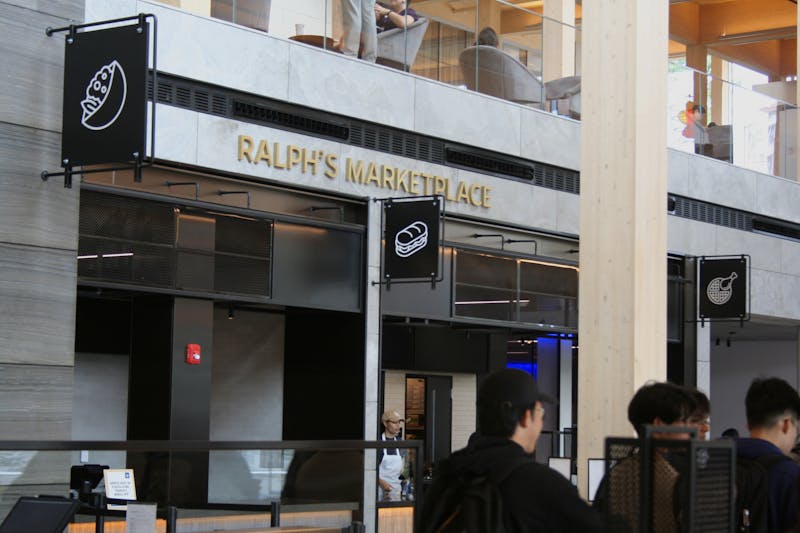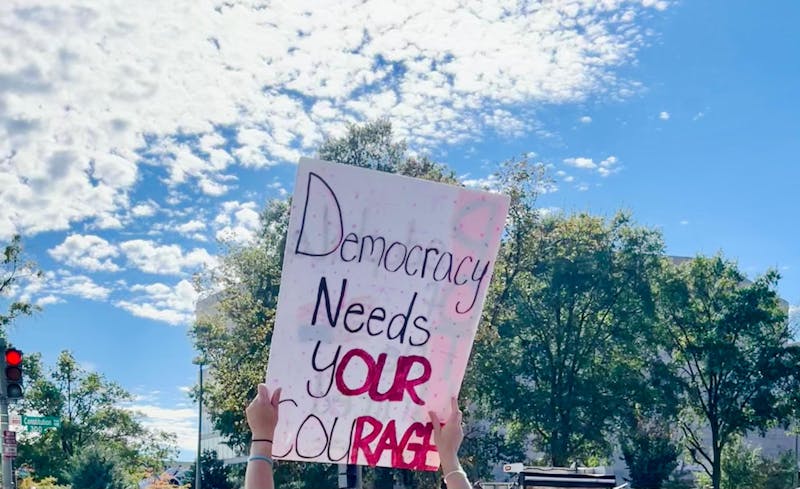The grand opening of the dining options at the Bloomberg Student Center on October 6, 2025, introduced a variety of food choices, including Koshary Corner, Connie’s Chicken and Waffles, Tim Ma Hospitality, and Urban Oyster. While the new offerings aim to enhance campus dining, they have also raised important questions regarding accessibility and affordability for students at Johns Hopkins University.
The official celebration took place on October 16, featuring performances from student musicians and remarks from university leaders, including Ronald J. Daniels, the university’s president. Daniels highlighted the Student Center’s role as a hub for community engagement and collaboration. In his speech, Michael Bloomberg emphasized the significance of giving back to the institution that shaped his career, noting his commitment to ensuring that financial barriers do not impede student access to educational opportunities.
The atmosphere of the Student Center has reportedly improved since the dining options opened. A survey conducted by The News-Letter revealed that students rated the atmosphere an average of 7.67 out of 10, a slight increase from previous ratings. Additionally, there was a notable rise in students’ ability to socialize and connect, with an average rating of 7.13, indicating that the dining facilities have fostered a more engaging environment.
Senior student Grace Aboagye observed that the new dining options have prompted more social interactions. “While people wait for their orders, they have a chance to converse,” she said, highlighting how the mobile app ordering system encourages engagement. Fellow senior Tanti Felli, representing the Office of Leadership Engagement and Experiential Development, also spoke about the importance of student representation in enhancing campus life.
Despite the positive feedback regarding the Student Center’s atmosphere, student engagement with the dining options presents a mixed picture. According to the survey, approximately 36.7% of students reported never eating at the Student Center, while 60% visited one to three times a week. The quality of food received an average rating of 6.9, with many students expressing that while the variety is welcome, improvements in taste and portion sizes are needed.
Affordability emerged as a significant concern among students. An overwhelming 80% of respondents described the pricing as expensive, with meals often costing between $12 to $14 for rice bowls, leading to budget constraints. One anonymous student remarked, “Eating almost $15 to $20 worth of meals every day is not feasible.” This sentiment reflects broader issues related to meal budgeting among the student body.
Accessibility for students with specific dietary needs has also been a critical topic. Freshman Dhruva Lahoti, a vegetarian, shared his challenges in finding suitable options within the new dining facilities. “I can’t eat much there,” he stated, noting that the portion sizes were inadequate for his dietary preferences. Many students echoed similar concerns, emphasizing that while diversity in food choices is appreciated, options for dietary restrictions such as halal, vegetarian, and allergy-friendly meals remain limited.
Some students criticized the lack of halal options, highlighting that only one vendor currently offers such choices. One student expressed disappointment, stating that there should be more halal offerings, particularly as the university is a prominent institution that could advocate for such inclusivity. Another respondent raised issues regarding food allergies, specifically mentioning the difficulties of using the mobile ordering app without an option to communicate dietary restrictions.
As the Bloomberg Student Center settles into its role within the campus community, the initial excitement surrounding the new dining options is tempered by ongoing concerns about accessibility and affordability. While many students enjoy the enhanced atmosphere and variety, addressing these critical issues may be necessary for the Student Center to fully serve the diverse needs of the Johns Hopkins community.







